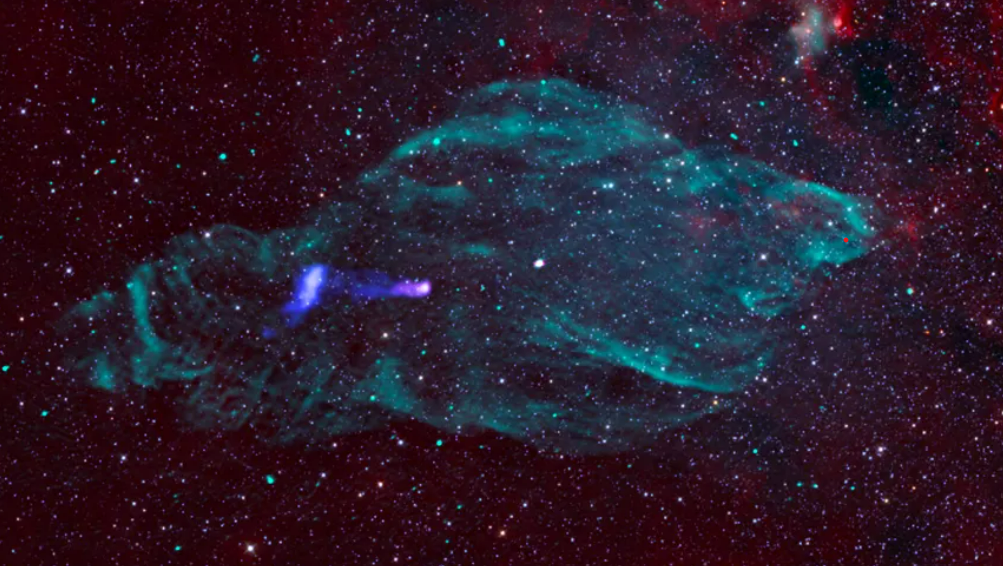On 1/16/24, NASA posted "NASA's IXPE Helps Researchers Maximize 'Microquasar' Findings" (https://www.nasa.gov/missions/ixpe/nasas-ixpe-helps-researchers-maximize-microquasar-findings/). The posting, coinciding with publication of the Astrophysical Journal Letters article, includes combined images from IXPE, Chandra, XMM-Newton, infrared, and radio observatories.
The microquasar in question - Stephenson and Sanduleak 433, or SS 433 - sits in the center of the supernova remnant W50 in the constellation Aquila, some 18,000 light-years from Earth. SS 433's powerful jets, which distort the remnant's shape and earned it the nickname the "Manatee Nebula," have been clocked at roughly 26% of the speed of light, or more than 48,000 miles per second. Identified in the late 1970s, SS 433 is the first microquasar ever discovered.
IXPE's three onboard telescopes measure a special property of X-ray light called polarization, which tells scientists about the organization and alignment of electromagnetic waves at X-ray frequencies. X-ray polarization helps researchers understand the physical processes taking place within extreme regions of our universe such as the environment around black holes, and how particles get accelerated in these regions.
"The IXPE data show that the magnetic field near the acceleration region points in the direction the jets are moving," said astrophysicist Philip Kaaret (ST12). "The high level of polarization seen with IXPE shows that the magnetic field is well ordered, with at least half of the field aligned in the same direction," Kaaret said.







